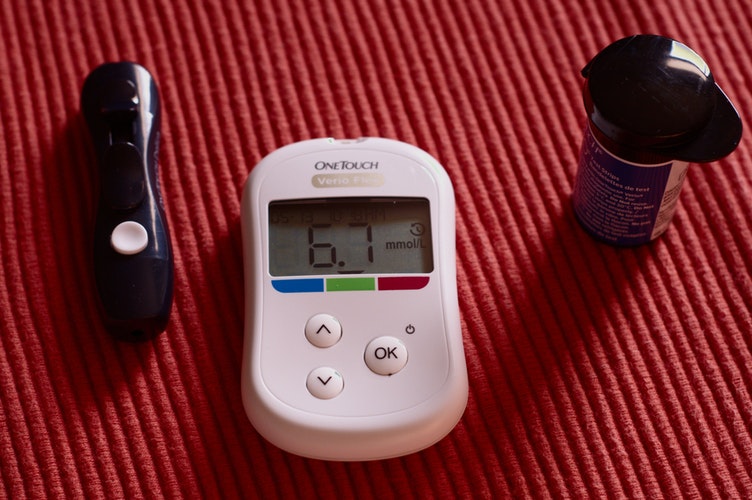Hypoglycemia is the medical name for low blood glucose (low blood sugar)—specifically, a blood glucose level below 4 mmol/L. Frequent or severe hypoglycemia can have a very negative effect on your diabetes management and your overall quality of life, making it important to be able to recognize the warning signs, to have strategies in place for preventing it, and to know how to treat it if it does occur.
Causes
Hypoglycemia may result from a number of factors including:
• not eating on time
• not eating enough
• getting more physical activity than usual
• taking too much medication
• drinking alcoholic beverages
Warning signs
The warning signs of hypoglycemia can vary from person to person, and some people don’t experience any warning signs at all. When warning signs do occur, they may include feeling:
• lightheaded
• shaky
• sweaty
• headachy
• hungry
• nauseated
• nervous, irritable, or anxious
• weak or drowsy
• unable to concentrate
• numbness or tingling in your lips or tongue
• fast heart rate
Very low blood sugar can cause:
• confusion and disorientation
• loss of consciousness
• seizures
Hypoglycemia can happen rapidly. Knowing the signs to watch for will enable you to treat it quickly.
Preventing hypoglycemia
It’s always better to prevent a problem than it is to be faced with the need to treat it, and these tips will help you prevent hypoglycemia:
• Follow the blood glucose monitoring schedule your diabetes care team has created for you. Careful monitoring is critical to making sure your blood sugar level remains within your target range.
• Eat on schedule. Don’t skip meals or snacks.
• Take your diabetes medication or insulin on schedule.
• If you are going to be very physically active, adjust your medication or have additional snacks.
• If you chose to drink alcohol, don’t do it on an empty stomach.
• Keep a log of your low glucose readings so you will be able to identify patterns.
Treating hypoglycemia
Sometimes, even the best efforts to prevent a problem aren’t enough. If you think your blood sugar may be low, check it immediately. If you don’t have access to your meter, treat the symptoms anyway. Treat hypoglycemia by eating or drinking 15 grams of a fast-acting carbohydrate, such as:
• 15 g of glucose in the form of glucose tablets
• 15 mL (1 tablespoon) or 3 packets of sugar dissolved in water
• 15 mL (1 tablespoon) of honey (Do NOT give honey to a child younger than one year of age.)
• 150 mL (2/3cup) of juice or regular (not diet) soft drink
• 6 LifeSavers® candies
Wait 15 minutes, then check your blood sugar again. If it is still low, treat it again with another 15 grams of fast-acting carbohydrates. Wait another 15 minutes, and then check it again. Keep doing this until your blood glucose is above 4 mmol/L. Once your blood sugar reaches 4 mmol/L, if your next meal is more than an hour away or if you are going to be physically active, have a snack that contains 15 grams of carbohydrate plus a protein source—such as half of a sandwich or cheese and crackers. Be sure to wait at least 40 minutes after your blood sugar reaches at least 5 mmol/L before driving, because your brain may need that long to recover before you can drive safely again.
If your blood sugar remains below 4 mmol/L or if you become sleepy and less alert, call 911 or your local emergency number immediately.
Severe hypoglycemia
Severe hypoglycemia in a conscious person is treated with 20 grams of fast-acting carbohydrates, preferably in the form of glucose tablets. Blood glucose should be retested in 15 minutes and retreated with another 15 grams of fast-acting carbohydrates if blood glucose remains below 4 mmol/L. Severe hypoglycemia in an unconscious person is treated with an injection of glucagon administered either subcutaneously (under the skin) or intramuscularly (into a muscle). The effectiveness of glucagon will be reduced in people who have consumed more than two standard alcoholic drinks in the previous few hours, in those who have been fasting, and in those who have advanced liver disease. People with diabetes should wear medical identification jewelry. That way, if they lose consciousness and are unable to speak for themselves, emergency responders will know what to look for and what to do.
Hypoglycemia in a child
Even mild symptoms in a child require immediate attention. In a child under six years of age who has symptoms, a blood glucose level below 6 mmol/L with symptoms is enough to trigger treatment. In a child at least six years old who has symptoms, a blood glucose level less than 4 mmol/L is enough for treatment.
Treatment will depend on the child’s weight.
• A child weighing less than 15 kg (33 lbs.) should be given 5 grams of carbohydrates.
• A child weighing between 15 and 30 kg (33 to 66 lbs.) should be given 10 grams of carbohydrates.
• A child weighing more than 30 kg (66 lbs.) should be given 15 grams of carbohydrates, the same as an adult.
5 grams of carbohydrate:
• 11/2 oz. (45 mL) of fruit juice
• 1/2 cup (125 mL) of white milk
• 1/4 cup (60 mL) of chocolate milk
• 1/4 cup (60 mL) of regular (not diet) pop
• 1-11/2 teaspoons (4-6 g) of jelly or jam
10 grams of carbohydrate:
• 3 oz. (90 mL) of fruit juice
• 3/4 cup (185 mL) of white milk
• 1/3 cup (80 mL) of chocolate milk
• 1/4 cup (60 mL) of regular (not diet) pop
• 2-3 teaspoons (8-12 g) of jelly or jam
Tips for family, friends, and coworkers
If you have diabetes, it is important that the people around you know what to do if your blood sugar drops too low. These tips will help:
If you are unconscious:
• The person should prepare a shot of glucagon and administer the shot following the instructions that came with the medication.
• As soon as the injection has been administered, the person should call 911 or your local emergency number.
If you are conscious and able to swallow:
• The person should lift your head and give you ½ teaspoon (7.5 mL) of water to swallow.
If you swallow the water without coughing or choking:
• The person should give you 15 grams of glucose tablets or 15 grams of fast-acting carbohydrates, then wait 15 minutes and see if you need help testing your blood glucose level.
• If you are feeling better but your blood glucose is still low or you still have symptoms, the person should give you another 15 grams of glucose tablets or fast-acting carbohydrates then wait with you for another 15 minutes until you test your blood glucose again.
• If you become sleepy or lethargic, the person should call 911 or your local emergency number immediately and stay with you until help arrives.
If you cough or choke on the water:
• The person should turn you on your side and make sure your airway isn’t blocked.
• Then the person should prepare a shot of glucagon and administer the shot following the instructions that came with the medication.
• As soon as the injection has been administered, the person should call 911 or your local emergency number.
• If you are unconscious and emergency help hasn’t arrived within five minutes, the person should give you another glucagon shot and stay with you until the emergency help arrives.












 Sophie Mullins of Paradise, Newfoundland, was diagnosed with type 1 diabetes when she became seriously ill at the age of 18 months. Her parents, Heidi Pavelka and Jamie Mullins, worried about her constantly, since her blood sugar can drop without warning, putting her at risk of hypoglycemia. “Sophie doesn’t feel her lows—she could have low blood sugar and be running around the house as if everything is normal,” says Pavelka. Their worries were alleviated thanks to a new addition to the family: a six-month-old black Labrador retriever named Peaches, a diabetes alert dog who has been trained over several years to detect Sophie’s low blood sugar levels and get help when she needs it. (Note: At six months the dog moves in with the patient’s family to begin the training process.)
Sophie Mullins of Paradise, Newfoundland, was diagnosed with type 1 diabetes when she became seriously ill at the age of 18 months. Her parents, Heidi Pavelka and Jamie Mullins, worried about her constantly, since her blood sugar can drop without warning, putting her at risk of hypoglycemia. “Sophie doesn’t feel her lows—she could have low blood sugar and be running around the house as if everything is normal,” says Pavelka. Their worries were alleviated thanks to a new addition to the family: a six-month-old black Labrador retriever named Peaches, a diabetes alert dog who has been trained over several years to detect Sophie’s low blood sugar levels and get help when she needs it. (Note: At six months the dog moves in with the patient’s family to begin the training process.) Diabetes is the leading cause of blindness in Canada. Diabetic retinopathy, which results in vision loss, is caused by damage to the blood vessels of the retina. It affects 25% of people with type 1 diabetes and up to 14% of people with type 2 diabetes. Having diabetes also raises the risk of developing other eye problems, such as cataracts and glaucoma. While it can be frightening to lose part or all of your vision, there are plenty of strategies, tools, and resources available to help you stay as independent as possible. Here are some of them.
Diabetes is the leading cause of blindness in Canada. Diabetic retinopathy, which results in vision loss, is caused by damage to the blood vessels of the retina. It affects 25% of people with type 1 diabetes and up to 14% of people with type 2 diabetes. Having diabetes also raises the risk of developing other eye problems, such as cataracts and glaucoma. While it can be frightening to lose part or all of your vision, there are plenty of strategies, tools, and resources available to help you stay as independent as possible. Here are some of them. Physical activity is the best treatment for type 2 diabetes. Why not do it in the great outdoors?
Physical activity is the best treatment for type 2 diabetes. Why not do it in the great outdoors?